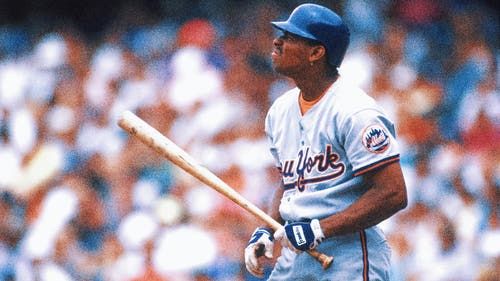
Jeter fights time with swing changes
The adjustment is actually caveman simple, its only requirement is eliminating the stride. Take a snapshot of Albert Pujols’ minimalist swing — no moving parts, just instant, furious hip rotation — and you have the template that Derek Jeter is attempting to clone this spring.
Of course, the two stars are universes apart in their career arcs. But the need for a cleaner, quicker approach is how Jeter, approaching his age-37 season, intends to fool mother nature. Welcome to one of the New York Yankees’ more intriguing storylines, as Jeter is coming off the worst offensive season of his career, looking to defy not just his reflexes, but baseball history.
The .270 average represented a logical and predictable decline, experienced by practically every shortstop in Jeter’s age-range. Only two shortstops 36 and older have ever hit .300 or better: Luke Appling (three times) and Honus Wagner (twice).
The rest of the mortals either succumbed to part-time duty, changed positions or simply retired. Jeter’s circumstances are much different, of course, as he’s beginning a new, three-year, $51 million contract that presumes his 2010 performance was an aberration.
Jeter is so convinced he can bounce back that he doesn’t address questions about his age. Instead, he attributes last summer’s decline in virtually every offensive category to “bad habits.”
“I was striding late, I was striding too far forward. I think it was tying up my swing,” Jeter said before adding, “I was getting good pitches to hit, (but) I was hitting them right into the ground."
The captain is working with hitting instructor Kevin Long to quicken his hands, making it easier to access inside-corner fastballs. Doing so entails a subtle adjustment (or gimmick, your choice): Instead of initiating a weight shift, moving his left foot toward home plate, Jeter is now completely still as the pitch hurtles toward him. Like Pujols, he simply pivots on the ball of that same left foot.
The results, at least in batting practice, have been encouraging. Not only is Jeter hitting the ball harder, he’s lifting it into the gap.
That was the most damning element of last season’s under-performance: Two out of every three of Jeter’s at-bats resulted in ground balls, the highest percentage of his career since Fangraphs.com started keeping track of such trends in 2002. Because he turned into a ground-ball machine, Jeter, along with Juan Pierre, made the most outs in the majors (515).
Such data was the source of this winter’s friction between Jeter and the front office. Executives were flabbergasted when agent Casey Close presented his first demand, six years, $150 million, resulting in a two-month standoff. Jeter was finally talked down to $17 million a year, a $4 million pay cut, but not until one team official pulled him aside and explained there was no reason to be insulted.
The executive used Al Pacino as an example: The Hollywood icon makes less per movie today than he did in the '70s and '80s, yet his legend continues to grow.
Jeter ultimately accepted the notion that the dollars no longer have to match his generational impact. Nevertheless, the Yankees are factoring in his 2009-level productivity as a component in their two major weapons — scoring runs and protecting leads.
Is it realistic to count on a turnaround, though? Jeter’s new swing can theoretically make his bat quicker, but it also means breaking a habit that Long says, “probably goes back to high school and Little League.”
Changing the calculus also strips Jeter’s of his unique ability to defeat inner-half fastballs by drawing in his hands and punching line drives to right-center. That was his calling card in the '90s and early 2000s, although Long pointed out the science of pitching has evolved so rapidly, hitters like Jeter, who have relied on the inside-out swing, are struggling to keep up.
“The game has definitely changed,” Long said. “Now every guy has a cutter. Guys like Jon Lester, throwing cutters at 94, have better command than they’ve ever had, especially on both sides of the plate.”
Scouts will be paying close attention in April and May, judging whether Jeter can still catch up to elite-caliber velocity. By then, the Yankees will at least have an early read on whether Long’s experiment has worked. Jeter also will prove to himself that he can be one of the genetically blessed, able to at least slow time’s relentless onslaught.
For now, the Yankees are awash in optimism, carefully avoiding any discussion of the darker flip-side to Jeter’s birth certificate — reducing his playing time to a more age-appropriate 125 games, dropping him in the lineup or even vacating shortstop some day.
These subjects are all considered taboo in Joe Girardi’s office. The manager, wisely, doesn’t do hypothetical questions, not when it comes to Jeter’s age 37-39 seasons. He knows that, as great as Jeter has been so far, his legacy is still incomplete. There’s one last question left to answer: Just how well will the Yankee captain age?










